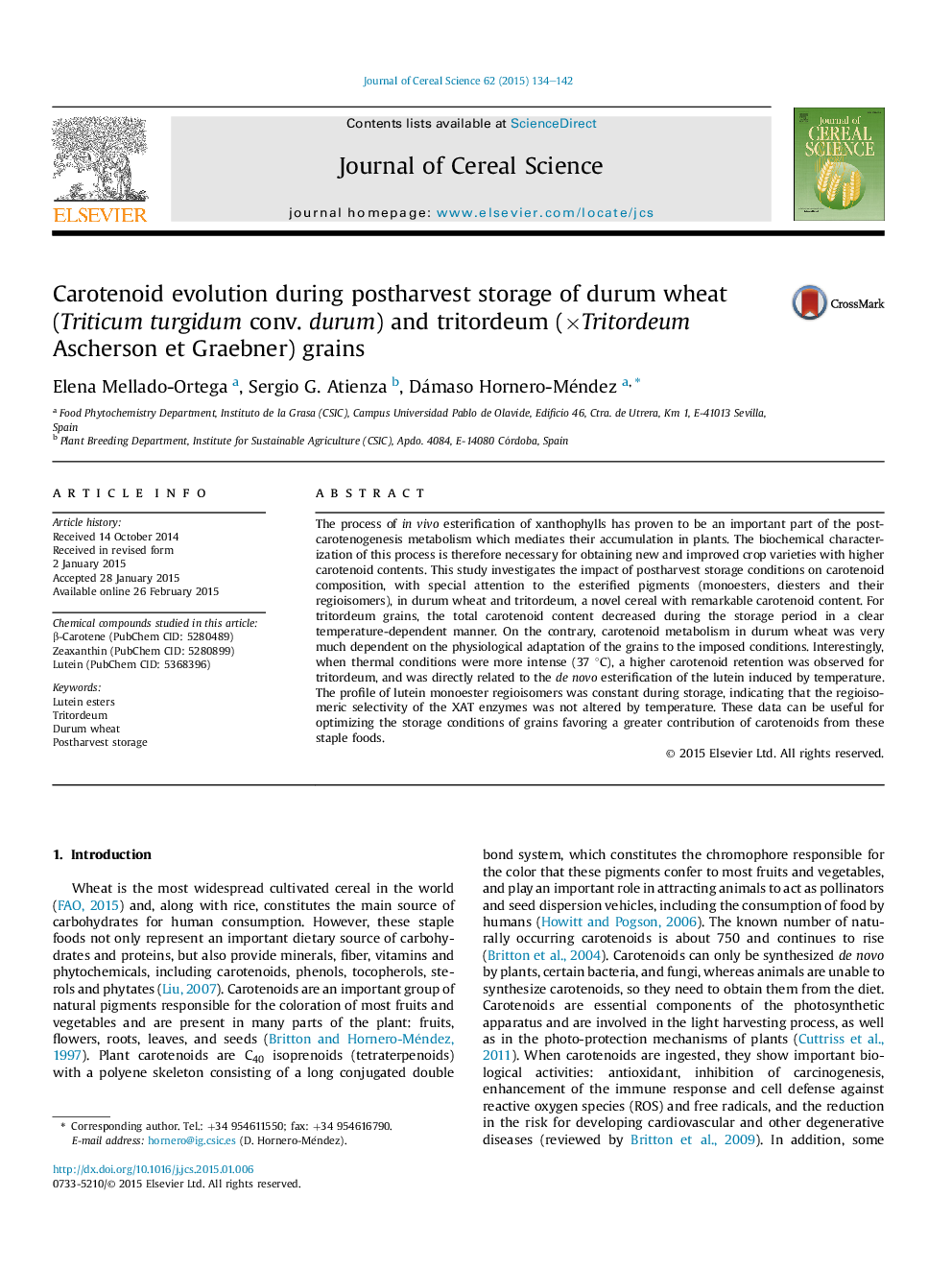| Article ID | Journal | Published Year | Pages | File Type |
|---|---|---|---|---|
| 4515734 | Journal of Cereal Science | 2015 | 9 Pages |
The process of in vivo esterification of xanthophylls has proven to be an important part of the post-carotenogenesis metabolism which mediates their accumulation in plants. The biochemical characterization of this process is therefore necessary for obtaining new and improved crop varieties with higher carotenoid contents. This study investigates the impact of postharvest storage conditions on carotenoid composition, with special attention to the esterified pigments (monoesters, diesters and their regioisomers), in durum wheat and tritordeum, a novel cereal with remarkable carotenoid content. For tritordeum grains, the total carotenoid content decreased during the storage period in a clear temperature-dependent manner. On the contrary, carotenoid metabolism in durum wheat was very much dependent on the physiological adaptation of the grains to the imposed conditions. Interestingly, when thermal conditions were more intense (37 °C), a higher carotenoid retention was observed for tritordeum, and was directly related to the de novo esterification of the lutein induced by temperature. The profile of lutein monoester regioisomers was constant during storage, indicating that the regioisomeric selectivity of the XAT enzymes was not altered by temperature. These data can be useful for optimizing the storage conditions of grains favoring a greater contribution of carotenoids from these staple foods.
